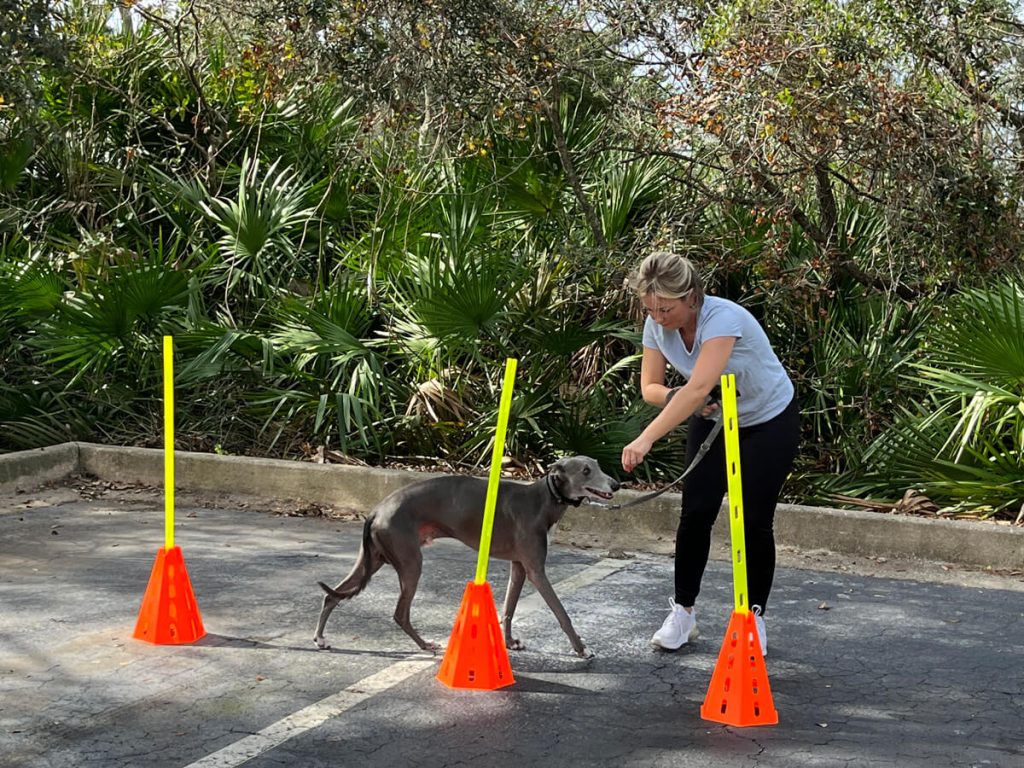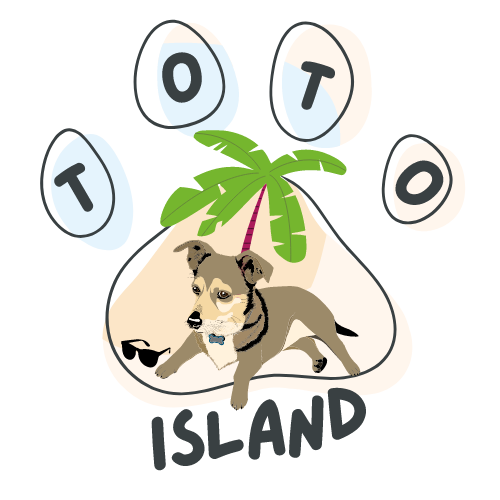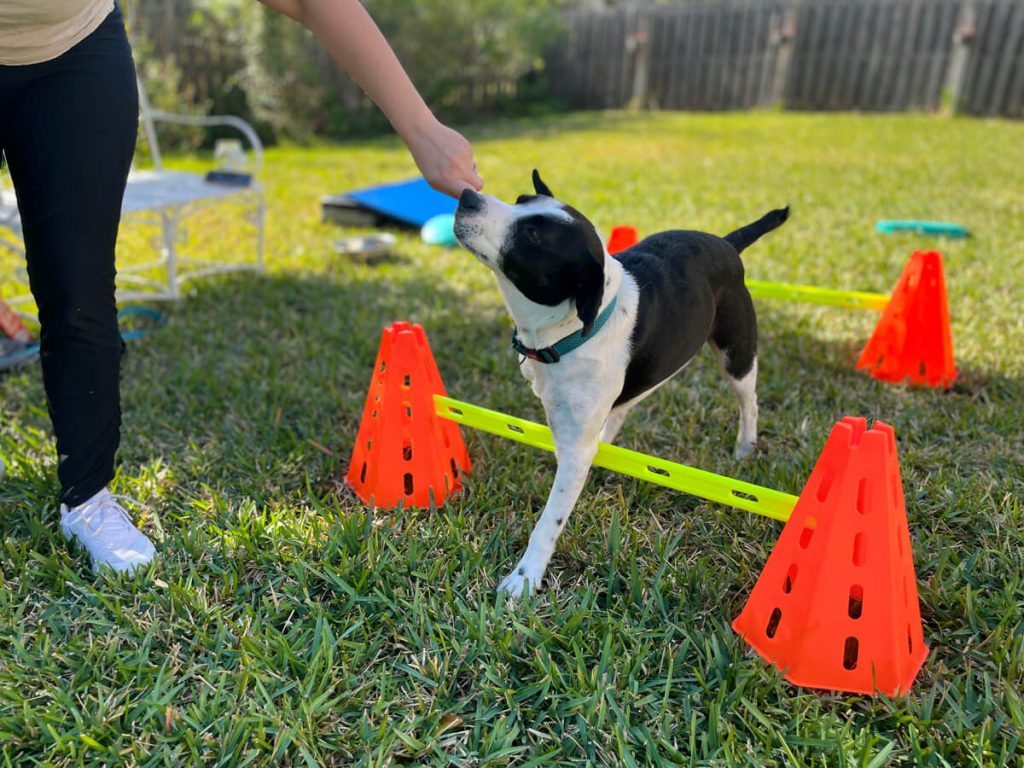Regular exercise is essential for a healthy lifestyle for dogs. It helps maintain muscle mass and improves overall well-being. In this article, we’ll explore why exercise is important for dogs, how to create an effective dog fitness plan, and which healthy exercises can support your four-legged friends. We will also cover special cases, such as exercise for dogs with enlarged hearts, and answer common questions related to dog exercise.
We’ll begin by reviewing why regular movement is crucial for dogs, then detail various fitness exercises like walking and running, swimming, tug of war, and stair climbing. Finally, we’ll address special cases and answer frequently asked questions about scent work, the safety of tug of war, the benefits of swimming, and the suitability of stair climbing for dogs.
Why regular exercise is important for dogs?
Regular exercise is extremely important for dogs as it helps maintain an appropriate weight, strengthens muscles, and improves cardiovascular health. Additionally, exercise reduces behavioral problems, as physical activity tires dogs out, making them less likely to engage in undesirable behaviors due to boredom. Active dogs are generally happier and more balanced because exercise also stimulates their minds.
Considering the modern lifestyle, many dogs have fewer opportunities for free movement. Just like in people, a sedentary lifestyle can lead to health issues over time, such as obesity, joint problems, and heart disease. Exercise keeps dogs fit both physically and mentally and helps avoid these types of problems.
-> Check out the Dog physiotherapy treatments!
Creating a dog fitness plan
A well-structured dog fitness plan ensures that your dog gets the right amount and type of exercise regularly. The first step is to consider your dog’s age, breed, and health condition. Puppies and senior dogs have different exercise needs, and breeds also vary in their physical activity requirements. For example, a Border Collie needs more exercise than a Bulldog.
When creating a fitness plan, it’s important to include different types of exercises in the daily routine, such as walking, running, and interactive play. The duration and intensity of workouts can be gradually increased to allow your dog’s body to adjust to the load. Additionally, incorporating a variety of activities helps maintain your dog’s interest and prevents boredom from repetitive exercises.
Regular check-ups and consultations with your veterinarian are also crucial parts of the fitness plan, especially if your dog has any health issues. Your vet can help determine which exercises are best for your dog and how to safely increase physical activity.

Healthy exercise for dogs
There are several types of healthy exercises that can help maintain your dog’s muscle strength and overall health. Here are some effective methods:
- Walking and running: Walking and running are the simplest and most common ways to ensure physical activity for dogs. These exercises do not require special equipment and can be done in almost any environment. Regular walking and running not only strengthen your dog’s muscles but also improve cardiovascular health. Moreover, they provide opportunities for your dog to encounter new stimuli, which mentally stimulates them.
- Swimming: Swimming is an excellent exercise for dogs, particularly for those with joint issues. Swimming is a low-impact activity that protects joints while strengthening muscles and improving cardiovascular endurance. However, it is important to ensure that your dog swims in a safe environment and is always supervised to prevent accidents.
- Tug of war: Tug of war is a great way to strengthen your dog’s muscles, especially around the neck and shoulders. This game also provides mental stimulation as it requires strategic thinking. However, it’s important to follow the rules of the game and control it to avoid injuries and dominance issues.
- Stair climbing: Stair climbing is an effective way to build muscle strength and endurance in dogs. It is an intense exercise that particularly benefits the back legs and glutes. However, it’s crucial to ensure that your dog does not overexert itself and that the intensity of the workouts is gradually increased.

Special cases: Exercise for dogs with enlarged hearts
Dogs with enlarged hearts require special attention when it comes to exercise. Intense physical activity can place excessive strain on their hearts, so their fitness plan should always be designed based on veterinary advice. It is essential that such dogs engage in low-intensity but regular exercise to improve heart health without overloading it.
Swimming can be an excellent choice for these dogs as it is gentle on both joints and the heart while effectively strengthening muscles and improving cardiovascular condition. Short, frequent dog walks are also beneficial, particularly if they are at a steady pace and avoid inclines and extreme heat.
Monitoring is another critical aspect of exercise for these dogs. Any unusual symptoms, such as shortness of breath, excessive fatigue, or fainting, should prompt an immediate halt to the exercise and consultation with the veterinarian. Regular medical check-ups are also vital to ensure the dog’s heart condition and adjust the fitness plan accordingly.
Frequently asked questions about dog exercise
- How often should I exercise my dog? Dogs’ exercise needs vary by breed and individual, but generally, 30-60 minutes of moderate-intensity exercise daily is recommended. It is important that exercise routines are consistent and tailored to your dog’s needs.
- Is scent work good exercise for dogs? Scent work is a natural and instinctive activity for dogs that provides excellent mental stimulation. While it doesn’t require as much physical exertion as other exercises, it can be a valuable addition to a daily fitness program as it helps develop concentration and mental sharpness.
- How do I start tug of war with my dog? To begin tug of war, use a strong, durable toy that your dog can easily grasp. Always control the game and set rules so your dog knows when the game starts and ends. It is important to watch your dog’s teeth and gums during play to avoid injuries.
- What are the benefits of swimming for dogs? Swimming is a low-impact, yet effective exercise that is particularly beneficial for dogs with joint problems or older dogs. It strengthens muscles, improves cardiovascular health, and helps maintain proper weight. It also provides mental stimulation as dogs navigate new environments and play in the water.
- Is stair climbing recommended for dogs? Stair climbing is an intense and effective exercise that strengthens a dog’s back legs and glutes. It is especially useful for young, energetic dogs who need extra exercise. However, it’s important to monitor the dog to avoid overexertion and to gradually increase the intensity of the workouts.
Regular exercise is essential for dogs!
Regular exercise is crucial to keeping your dog’s muscles strong and healthy. When creating a dog fitness plan, consider your dog’s age, breed, and health condition. Different types of exercises, such as walking, running, swimming, tug of war, and stair climbing, all contribute to your dog’s physical and mental well-being.
Dogs with enlarged hearts require particular attention, with low-intensity but regular exercise being most suitable. Always base their exercise program on veterinary recommendations and monitor their condition during workouts.
Finally, answers to common questions about dog exercise can help you better understand your dog’s activity needs and the benefits of exercise. Whether you choose scent work, tug of war, swimming, or stair climbing, it’s important to tailor the exercises to your dog’s individual needs and limitations.
If you choose me as your dog masseuse or your dog’s fitness trainer, I will assess your dog’s condition every time, and if I find that your pet needs more rest, I will let you know.
For dog massage treatments and dog fitness training, feel free to contact me in the Saint Augustine area! Call us and we’ll arrange the first appointment! (904) 377 6291
For more puppy and adult dog tricks and useful information, read more on the blog:


